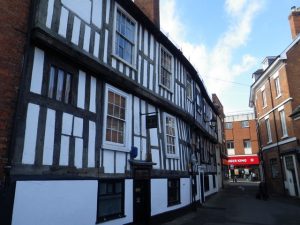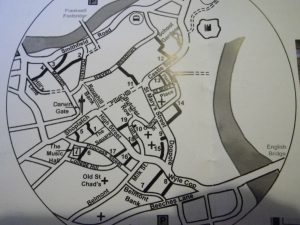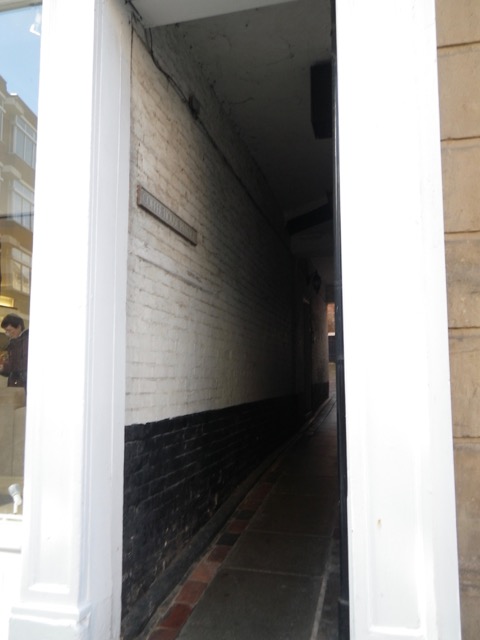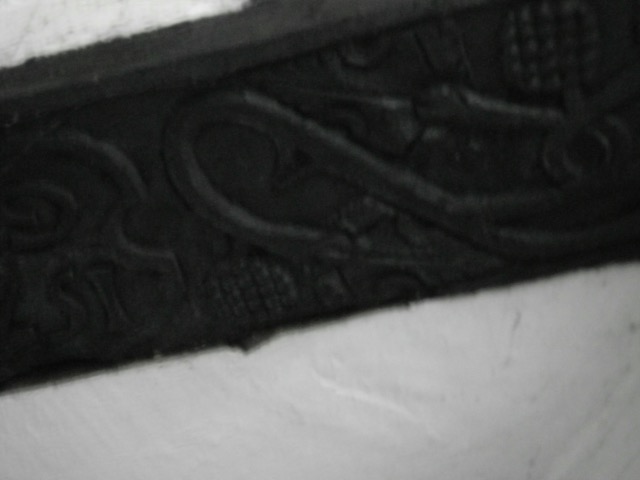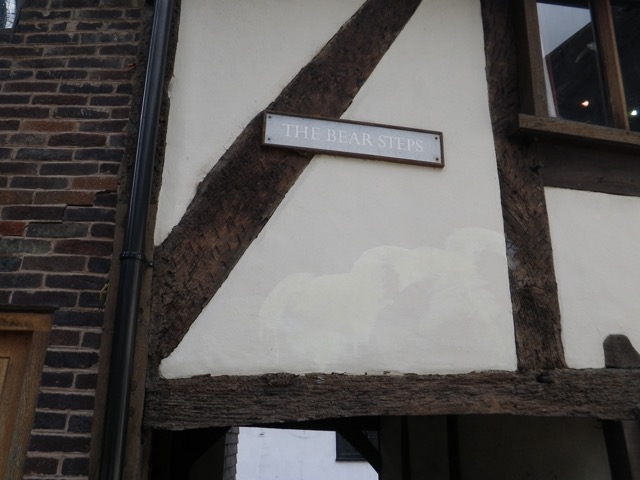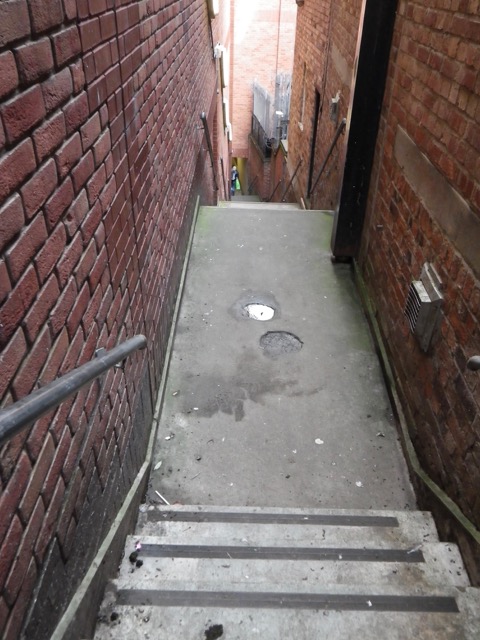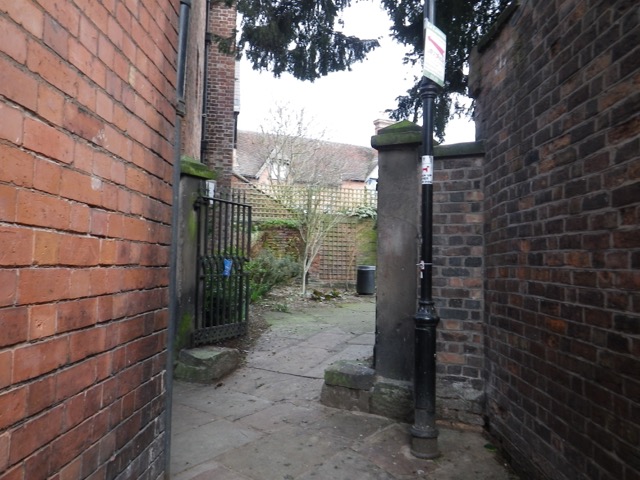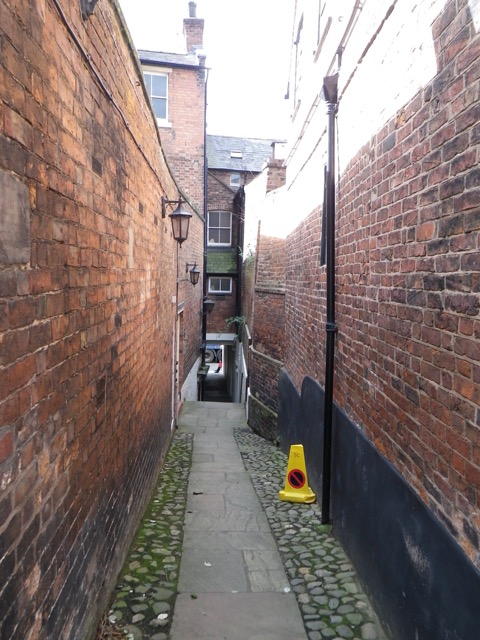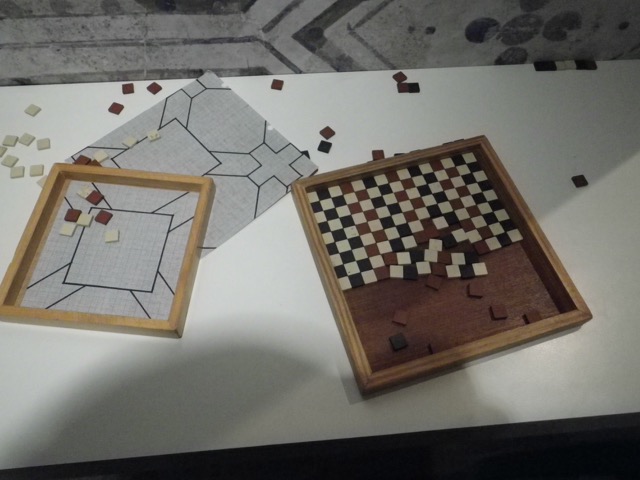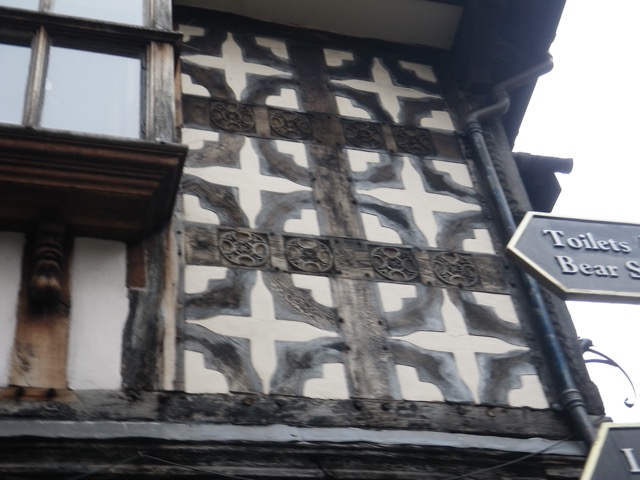Having completed the Tudor tour of Shrewsbury, I headed back to the Music Hall to commence the Victorians in Shrewsbury self-guided walking tour.
“Queen Victoria reigned from 1837 to 1901. These were years of peace, prosperity, population growth, invention, and expansion. Shrewsbury was not one of the boom towns and, although some working class estates and substantial middle class villas were erected in the suburbs,” the tour was limited to the town centre and its then new public and commercial buildings. “Many were built of high quality materials and were very varied in style because, of course, architectural styles did not change with the new monarch. Queen Victoria’s reign was also a time of greater regulation, moral certainty, growth of religious non-conformity, and considerable philanthropy.”
So the first stop was the Music Hall itself, where we finally get some information about it. It was “built in 1838-40. It looks classical and Greek and was known at first as Shrewsbury Public Rooms. It was built around a shut that led to a yard where engines of the Salop Fire Office were kept; this is now the entrance to the museum. The Music hall, with a choir and orchestra gallery, was to the left. The hall could seat nearly 800 and was also used for balls, banquets, lectures, meetings, and bazaars. … To the right of the shut, now the Visitor Information Centre, was the rebuilt Salop Fire Office; while a News Room occupied the elegant room on the first floor overlooking The Square, and a billiard room the floor above.”
It was this tour that finally gave me information on the unmarked statute at the front of The Square. Sorry for the wonky angle; there was a display in front of it.
So that’s Clive of India. “The Victorians decided to commemorate him, although his influence had been 100 years earlier in Georgian times. The sum of 2,000 guineas was raised by public subscription and Carlo Marochetti sculpted the figure, copying the likeness from a painting by Nathaniel Dance. In addition to his exploits in India, Clive was mayor in 1762 and M.P. for Shrewsbury three times. The statue dates from 1860.”
Across from Clive is a building in what I’ve learned is the Flemish style and which was built in 1892 from high quality materials for the Alliance Assurance Company, which is now the Halifax Building Society. “The carvings commemorate the companies that were incorporated into the Alliance at its creation.”
Next stop was the Victorian post box in front of Gullet Passage. It is late Victorian, hexagonal, and made of cast iron. It is called a Penfold box, after the designer. It would have originally been green since the boxes were only painted red starting in 1874. “Pre-charged mail, based on weight, was introduced at the very beginning of Queen Victoria’s reign and the volume grew dramatically from 76 million letters in 1839 to 350 million in 1850!”
On the way to the next stop, I was told to look at Claremont News, which has a typical Victorian small shop façade.
Next up is the Baptist Church, “which has recently been repaired and cleaned.” It “is very classical and less ornate than was usual for its date. The hard red bricks came from Ruabon in North Wales and were very popular at this time. … Here, they are paired with Grinshill stone, a local grey sandstone, to pick out the round-headed windows and Corinthian pilasters. This church cost £2,500 to build in 1878.
There is a lot of walking between stops on this store, so I had time to notice other things.
I have one of those…
These steps look very precarious.
Next up was The Quarry and the entrance to Wonderland…
AKA The Dingle.
Entrance to Wonderland/the Dingle. As you can imagine, my expectations were low.
First glimpses of this faery tale world before the bla bla bla.
“This is the Dingle, created from a quarry, which produced building stone for the early town. Long abandoned, a pool had formed in the lowest part and was used for watering cattle; one old photo shows children skating here during a cold spell. The quarry was landscaped in 1879, with a path and shrubs around the lake and a more formal area of flower beds that are replanted seasonally.”
The Dingle is the last stop on my next tour, so here is more information from that guide: “Although the rest of the Quarry was laid out as a park with an avenue of lime trees by the Corporation in 1719, an early photograph shows the Dingle as a ‘wild’ area, with a natural-looking pool; Charles Darwin is said to have fished there for newts. … The fountain in the centre of the formal flower beds was given to the town in 1889 by the Independent Order of Oddfellows. The gardens are a Percy Thrower legacy … He was park superintendent from 1946 to 1974 and became known nationally as the TV gardener. The Dingle is the jewel in the crown of the Parks Department, … each year it is brought to perfection for the Flower Show in August. Trees in the Dingle include Maidenhair Tree, Sweet Gum, Ginko, Tulip Tree, Swamp Cyprus, and an enormous mature Beech.”
Back to the Victorian guide, “At the far end of the lake is the statue of Sabrina, Goddess of the River Severn, now reclining in her own grotto…. The Earl of Bradford presented her to the town in 1879.”
I had fun watching the ducks for a bit.
Interesting artwork in a tree.
What an amazing spot, like a miniature Buchart Gardens.
I reluctantly left The Dingle and found the cast iron bandstand that dates from 1879 and which in recent years has been revived every odd Sunday afternoon
Across the river is the Pengwern Boathouse, with its typical Victorian architectural style.
“The Boat Club was founded in 1871 when rowing was very popular and it had racing boats as well as a number of pleasure boats. It moved to these premises in 1881 and still flourishes, holding a popular regatta in May.”
Very near the stop where I took the boathouse pictures, I came across this stout post just before the Kingsland Bridge, which you can see in blue in this picture. “This is an old ferry post, the windlass can be seen set back above some steps on the other bank. There were several of these pedestrian ferries in central Shrewsbury, which saved people a long walk to either the Welsh or English Bridge. This one was superseded by the Kingsland Bridge in 1882, which gave access to the fine Victorian suburb of Kingsland and the new Shrewsbury School. … The bridge, known locally as The Penny Bridge, as it charges tolls, has always been privately owned and operated. The ferry remained for some years and the boys from Shrewsbury School used it to avoid paying the toll to cross the river.
I now had a very long stroll ahead along the water, so I took the time to enjoy the surroundings.
Back of a structure we will see from the front…
Kingsland Bridge.
Looking to the centre of town. Notice the cathedral. That’s my second to next stop!
The Greyfriars pedestrian bridge, where I turned left to begin a surprisingly gentle climb back to town.
But first, this obelisk, “in memory of Dr W J Clement, a skilled and innovative surgeon, philanthropist, a long-serving local councillor, mayor, and for a while M.P. for Shrewsbury. He demanded reform of rotten boroughs, thus antagonising the Tories who dominated the Corporation. In return, they refused him a post at the hospital. … The memorial was erected in 1873 and was originally outside the railway station, but has been moved several times.”
Off I want to the cathedral, marvelling that I was all the way down there just moments before.
“The steep-gabled, neo-Gothic church is, in fact, the Roman Catholic Cathedral. It was started in 1853, only 20 years after the Catholic Emancipation Act and soon after the restoration of the Catholic hierarchy in Britain. … The limitations of the site led to some alterations to the original plan; the tall spire was replaced by a bell-cote and the chancel is very shallow.”
Looking back along Town Walls. If you keep going, you can turn left to take Wyle Cop to go back to the centre.
Looking ahead. I found it interesting how the sidewalk was so far up the road as to need a railing.
This is a water pump. There are several in Shrewsbury and they are all listed by English heritage. “They day from 1870 and the inscription encourages the careful use of water; the basin at the base catches any waste, which can be used for animals.”
Door to the watchtower. There is no information about this building on this tour, just its name.
The watchtower.
Looking towards my next two stops.
First is the girls’ high school.
Can you read the sign?
The high school was built in 1897-98. “This independent school is part of the Girls’ Day School Trust set up in 1864 following a National Enquiry, which concluded that there was ‘a general deficiency’ in the provision of secondary education for girls. The aim was to provide a high standard of academic, moral, and religious education for all social classes.”
Next is the magnificent neo-Gothic building we saw the back of down by the river, the former Eye, Ear, and Throat Hospital, opened in 1881, and now converted into flats.” I know where I’m moving to… 😀
“Its construction was a great example of Victorian philanthropy, ‘upwards of £12,,000 being raised largely through public subscriptions. … The cantilevered operating theatre windows on the second floor were originally glazed with single sheets of plate glass to provide maximum northern light for operations.”
I then turned up Swan Hill to get to my last destination.
This wasn’t on the tour, but was pretty.
The final stop is the Italianate former Police Station/Weights and Measures Office, built in 1893 “to house two important new services that were to be carried out by the local authority. The provision of a police service was made compulsory in 1856, though Shrewsbury was ahead of the game, having appointed 13 constables 20 years earlier.”
“In relation to the weights and measures, there were many attempts throughout the Victorian period to standardise weights and improve the standards of retail transactions. Between 1878 and 1893, new mechanisms for inspection and enforcement were established.
Thus ended the delightful Victorian tour. I think this was my favourite!
Heading home up Pride Hill, I was shocked to find that the McDonald’s had closed permanently. Am I glad I was able to visit its basement before that happened! I hope that Shrewsbury will not permanently lose that important landmark.















































































































